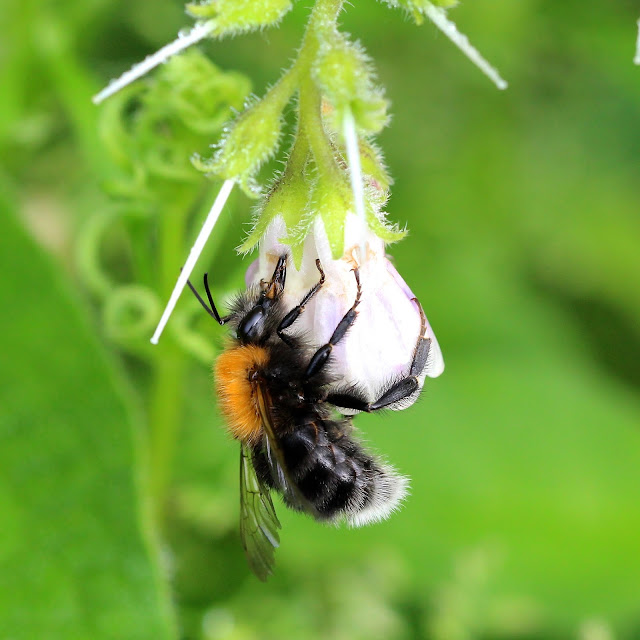If you look carefully you will see that on some comfrey plants every flower has a tiny hole bitten in the side.
Other short-tongued bees that rob nectar include the tree bumblebee (Bombus hypnorum)
and the common carder bee (Bombus pascuorum).
Worker bumblebees vary in side and the smaller ones can get right inside using the correct entrance, like this common carder bee. It is interesting that there were no holes in the flowers on this plant.
Long-tongued bees like the garden bumblebee (Bombus hortorum) don't have a problem.
Surprisingly the robbing doesn't seem to have much effect on a plant's reproductive success. You can read more about the biology of nectar robbing here.











Now that is just brilliant! Yet another detail to examine in the garden!
ReplyDelete(It's asking for my profile, I don't have time to sort it at the mo - Phil)
Wonderful photos.
ReplyDelete